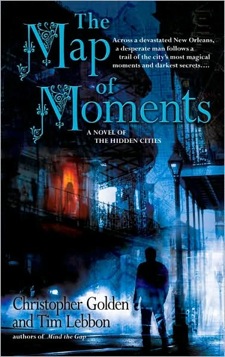Flashback: August 30, 2005. Heat shimmered off asphalt that had softened in hundred-degree weather, and the cacophony sounded like exactly what it was: too many people crammed in tight spaces, under stress.
Welcome to the Days Inn of Bossier City, Louisiana, an hour outside Dallas, where I’d already spent 48 hours in a tiny room with two other adults, two dogs and two cats. I’d be there three more days before my little group finally scattered to subsist on the charity of friends and family. On August 29, Hurricane Katrina had dealt New Orleans a glancing blow. On August 30, the levees broke.
Like everyone else in that Days Inn, I became a refugee, a suddenly homeless New Orleanian with $50 in the bank and two days’ worth of clothes that had suddenly become all I owned. Six weeks would pass before I could return to a city vastly changed from the one I left, to see what had survived of my home and job and friends. Some made it and some didn’t. All of us were scarred.
A lot has been written about Katrina since the storm made landfall five years ago: 2,191 books, according to an Amazon.com search. How many of those are science fiction or fantasy?
One: Christopher Golden and Tim Lebbon’s Map of Moments, released in 2009.
In theory, natural or human-made disasters should provide fertile ground for writers of science fiction and fantasy. What better setting to do what SF/F does best?exploring human nature under extreme conditions?
Yet it hasn’t happened. Informal queries on the 1,500-member “Worlds of Fantasy” e-mail loop, the 700-member “Futuristic, Fantasy & Paranormal” chapter of the Romance Writers of America, the forums of Science Fiction and Fantasy Writers of America, and even Twitter yielded a grand total of three SF/F books set during or after any historic large-scale disaster, natural or human-made: The Golden/Lebbon collaboration mentioned earlier, set in New Orleans post-Katrina, and recent books by urban fantasy author Jess Haines and cyberpunk author John Shirley that both use 9/11 as a launchpad.
Generic global catastrophe, of course, has long been a staple of science fiction and fantasy, dating at least as early as the 1920s, when S. Fowler Wright penned Deluge. On this list we find global pandemics (Stephen King’s The Stand), earthquakes (Arthur C. Clarke’s Richter 10); killer comets (Larry Niven’s Lucifer’s Hammer), hurricanes (John Barnes’ Mother of Storms); and global terrorism (Barnes’ recent Directive 51). The full list is a long one.
Real-world disasters? Not so much. My own theories as to why:
They’re real. Once an author commits to writing around a specific event, there’s a responsibility to keep it real, and reality runs counter to the whole “speculative” part of speculative fiction. The natural exception is urban fantasy, which seems ideally suited to blend fantasy with real-world disaster. So far, however, the genre hasn’t moved down that road.
They’re too familiar. USA Today noted in 2007 that six years after 9/11, more than 1,000 nonfiction titles had been published about the event, and fewer than 30 were fiction (and, at that time, none were SF/F). Carol Fitzgerald of Book-reporter.com speculated that fiction “couldn’t compete with the visual images that dominate our memories. We don’t need to create stories around the event. There were enough stories there from the start.”
They’re sensitive. No one wants to be seen as “cashing in” on tragedy, so authors have mostly worked around disasters. For example, author Charlaine Harris’ sixth Sookie Stackhouse novel, Definitely Dead, was in production at the time of Hurricane Katrina, and the disaster was noted in an acknowledgement. The next Sookie book addressed the hurricane from afar. Sherrilyn Kenyon temporarily moved her Dark Hunter characters from New Orleans to Seattle for safety.
It’s hard to get it right. This is the problem encountered in Map of Moments, our lone real-disaster urban fantasy. Protagonist Max traipses around parts of town that were impassable and stops for drinks in neighborhoods that were deserted. It’s a challenge to not only place a fantasy world within an accurate real-world setting but to also address post-disaster conditions. For many weeks after Katrina, for example, New Orleans had little or no electricity, potable water, or city services. It creates an extra layer of complexity to a novel’s plot when characters must figure out how to bathe, feed themselves, move from place to place, and dispose of their trash?while also saving the world from evil.
Real-world disaster-scapes seem like natural backdrops for riveting science fiction and especially urban fantasy but, so far, authors have stayed away. What’s your theory?
A longtime New Orleans resident now living in Auburn, Alabama, Suzanne Johnson writes urban and rural fantasy. Her book Royal Street, scheduled for release in April 2012 by Tor Books, is set in New Orleans during and after Hurrican Katrina. Find Suzanne on Twitter.










